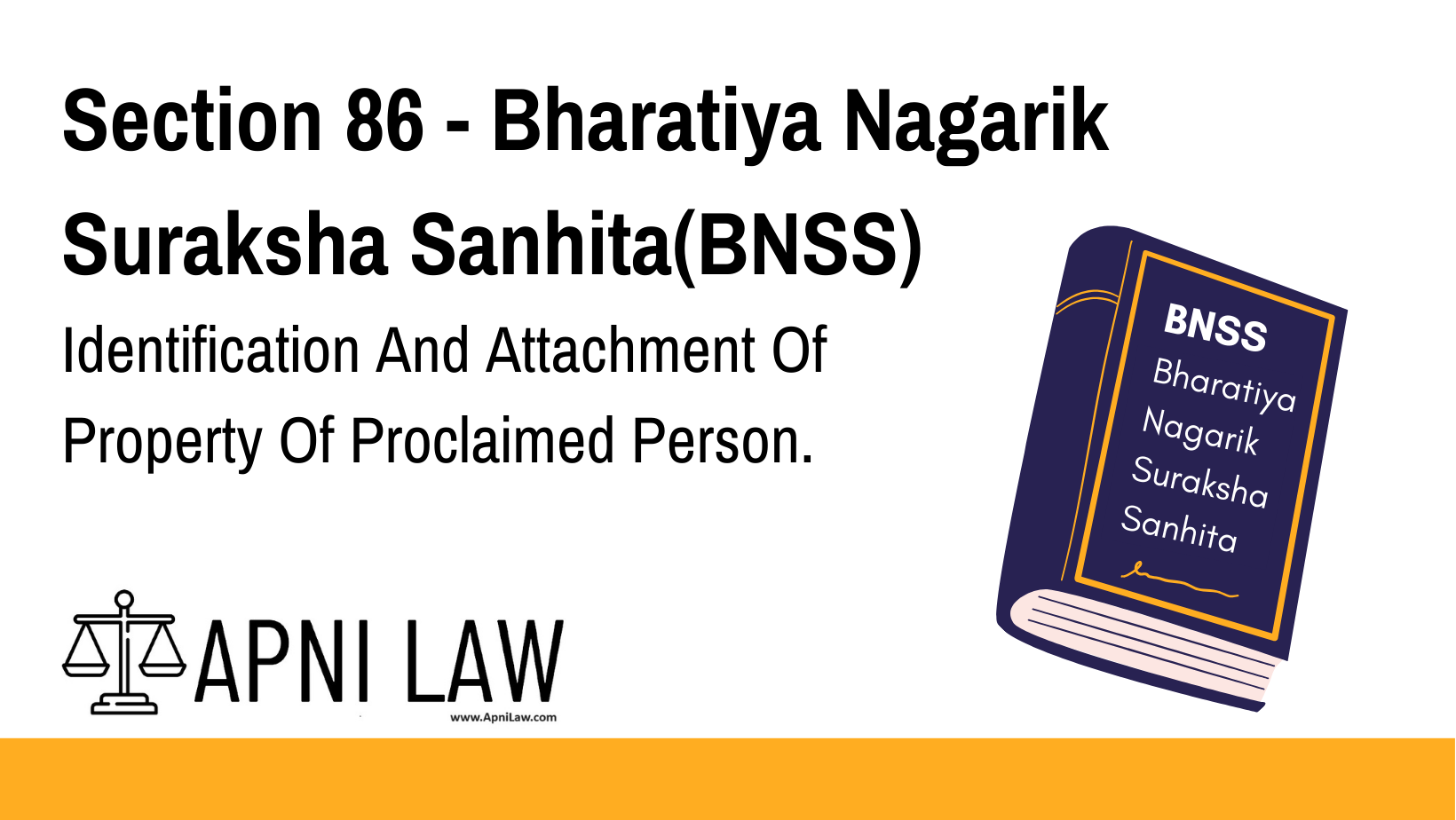Assistance from Foreign Authorities in Property Attachment and Forfeiture
The Court may, on the written request from a police officer not below the rank of
the Superintendent of Police or Commissioner of Police, initiate the process of requesting
assistance from a Court or an authority in the contracting State for identification, attachment
and forfeiture of property belonging to a proclaimed person in accordance with the procedure
provided in Chapter VIII.
Explanation of Section 86 BNSS
Objective of Section 86
Section 86 empowers Indian courts to seek international assistance in identifying, attaching, and forfeiting the property of proclaimed offenders who have assets in foreign countries (contracting States).
Key Features of Section 86
-
Request-Based Process
- A Superintendent of Police (SP) or Commissioner of Police must send a written request to the Court.
- The Court can then initiate the legal process for assistance.
-
Targeting Assets in Foreign Countries
- The request is sent to a Court or authority in a contracting State (a country that has a legal treaty or agreement with India).
- The aim is to identify, attach, and forfeit the proclaimed person’s foreign property.
-
Compliance with Chapter VIII
- The process must follow the legal framework outlined in Chapter VIII of BNSS.
- This ensures adherence to treaties and international legal cooperation mechanisms.
Illustration of Section 86 BNSS
Example 1: Seizure of Overseas Bank Accounts
A businessman commits financial fraud in India and flees to Dubai, where he holds multiple bank accounts and luxury properties. The Indian Police (SP/Commissioner of Police) requests the Indian Court to seek assistance from UAE authorities.
- The Indian Court initiates the request under Section 86 BNSS.
- The Dubai authorities identify and freeze the bank accounts.
- Legal proceedings begin for the forfeiture of assets under international law.
Example 2: Confiscation of Foreign Real Estate
A drug trafficker escapes India and settles in Canada, where he owns property.
- The Indian Court, upon a request from the SP, reaches out to Canadian authorities.
- Canada, under its treaty obligations, identifies and attaches the property.
- The property is later forfeited and repatriated to India.
Common Questions and Answers on Section 86 BNSS
1. What is the purpose of Section 86 BNSS?
- It allows Indian authorities to seek international cooperation to identify, attach, and seize the property of proclaimed offenders located in foreign countries.
2. Who can initiate the process under Section 86 BNSS?
- Only a Superintendent of Police (SP) or Commissioner of Police can make a written request to the Court.
3. Which foreign countries can assist under this section?
- Countries with which India has mutual legal agreements/treaties (contracting States).
4. What types of properties can be targeted?
- Bank accounts, real estate, businesses, stocks, and other financial assets belonging to the proclaimed person.
5. What happens after a foreign authority attaches the property?
- The property may be seized and forfeited according to the laws of the foreign country and India’s legal agreements.
Conclusion
Section 86 BNSS is a powerful tool for international legal cooperation, ensuring that criminals cannot escape justice by hiding their assets abroad. By allowing Indian courts to seek foreign assistance, this section:
✅ Strengthens global law enforcement cooperation
✅ Prevents criminals from benefiting from illegal wealth
✅ Ensures that proclaimed offenders face full legal consequences
For expert legal guidance, visit ApniLaw!








